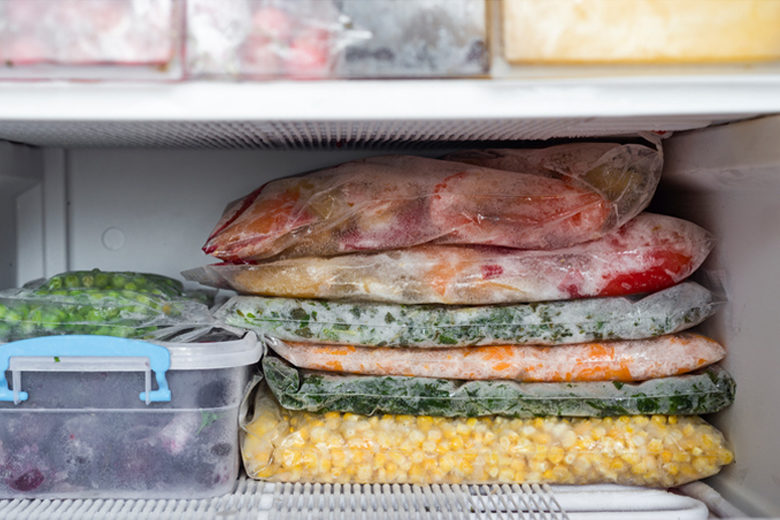
When you think of cooking with seasonal produce, the dark winter months probably don’t come to mind. Eating the recommended daily servings of fruits and vegetables can be a daunting task, and even more so when the local farmers market is boarded up until spring. The good news is that frozen produce is always in season! Here are a few great reasons to take a walk down the freezer aisle.
Nutritious: Studies have shown that frozen and fresh produce have almost identical nutrient profiles. Fruits and vegetables are frozen when perfectly ripe, so vitamins and minerals are preserved. ![]() While a few water-soluble vitamins such as riboflavin and vitamin C may vary slightly through the thawing process, differences are so minor that they would not impact overall health. Other nutrients including fiber and iron remain the same no matter what form the produce takes.
While a few water-soluble vitamins such as riboflavin and vitamin C may vary slightly through the thawing process, differences are so minor that they would not impact overall health. Other nutrients including fiber and iron remain the same no matter what form the produce takes.
Convenient: Since many frozen fruits and vegetables have already been blanched, their cooking convenience far outweighs preparation of fresh foods. Most things can be steamed, blended, sautéed or baked right out of the bag; no need for chopping or peeling. Microwaveable packaging even makes healthy eating a breeze in a college dorm.
Cheap: Per serving, the cost of frozen fruits and vegetables almost always beats fresh. When certain fruits aren’t in season, they may be prohibitively expensive in the produce department. However, the price and quality of frozen remain steady year round. Food waste related to spoilage is also eliminated.
Winter Squash and Spinach Lasagna
This take on a classic comfort dish is easy to whip up for cold nights and packed with nutrients. Perfect for when tackling a big winter squash just isn’t an option!
Adapted from Julia’s Album: Butternut Squash and Spinach Lasagna
Ingredients
Squash filling
- 12-ounce package frozen winter squash puree, thawed
- 1 cup low-fat ricotta cheese
- ½ cup skim milk
- 1 egg
- ½ teaspoon nutmeg
- ½ teaspoon salt
Spinach Filling
- 10-ounce package frozen chopped spinach, thawed
- 1 cup low-fat ricotta cheese
- 14-ounce package firm tofu
- 1 tablespoon minced garlic
- ½ teaspoon salt
- ½ teaspoon pepper
Other
- 1 package oven-ready lasagna noodles (whole-grain optional)
- 2 cups low-fat shredded mozzarella cheese
- ¼ cup shredded Parmesan cheese
Directions
- Preheat oven to 375°F and spray a casserole or baking dish with cooking spray.
- In a mixing bowl, whisk together ingredients for the squash filling.
- Gently press water out of tofu. In a separate mixing bowl, use a wooden spoon to mix together ingredients for spinach filling until everything is incorporated. It will be slightly chunky.
- Spread a third of squash filling on bottom of the baking dish, and top with a layer of lasagna noodles without overlapping. Make sure corners of the noodles are covered with the filling if using oven-ready, so that they cook completely.
- Next, spread a third of spinach filling on top of the noodles and sprinkle with a handful of mozzarella and another layer of noodles.
- Continue layering with other remainder of squash and spinach mixtures, as well as mozzarella, until all ingredients are used.
- Top final layer with shredded Parmesan cheese and cover dish with aluminum foil.
- Bake covered for 30 minutes, then remove foil and bake for another 10 minutes.
